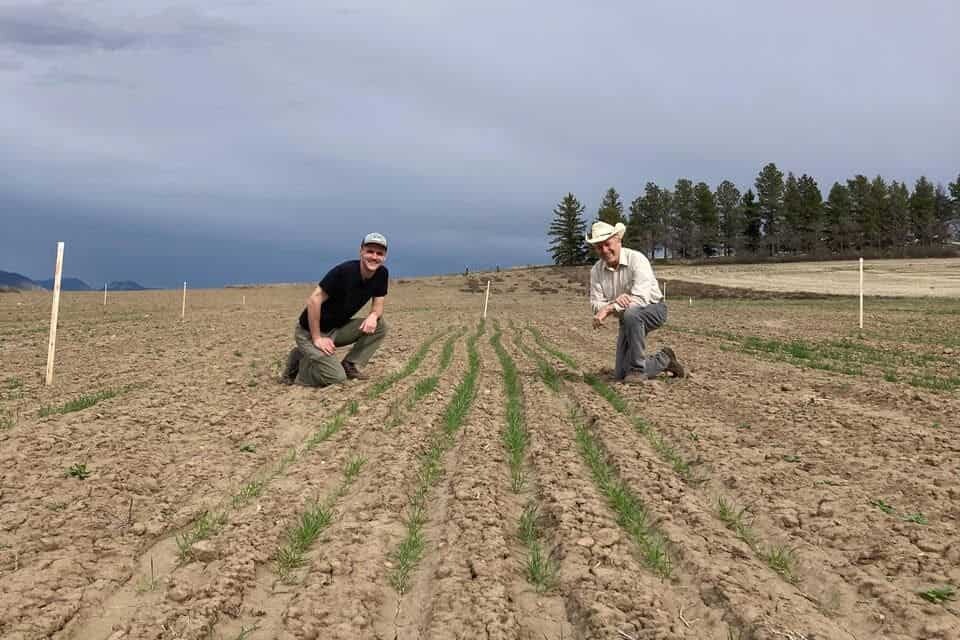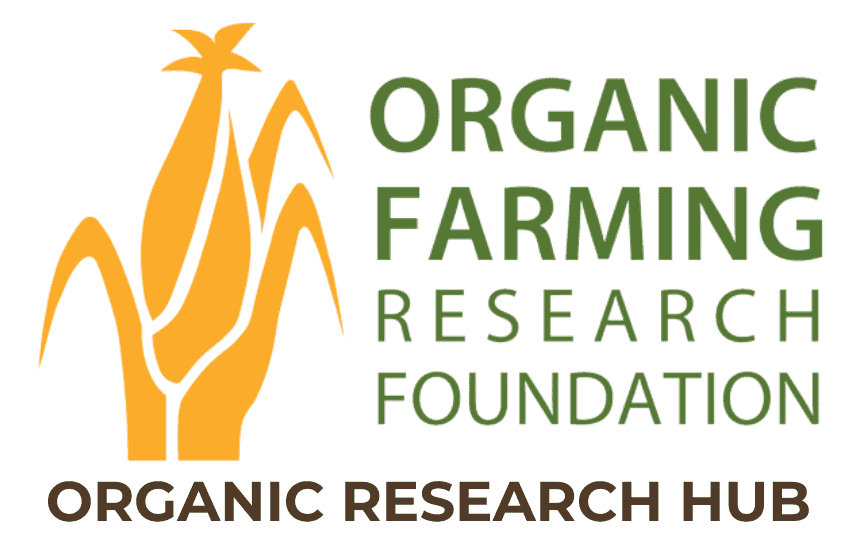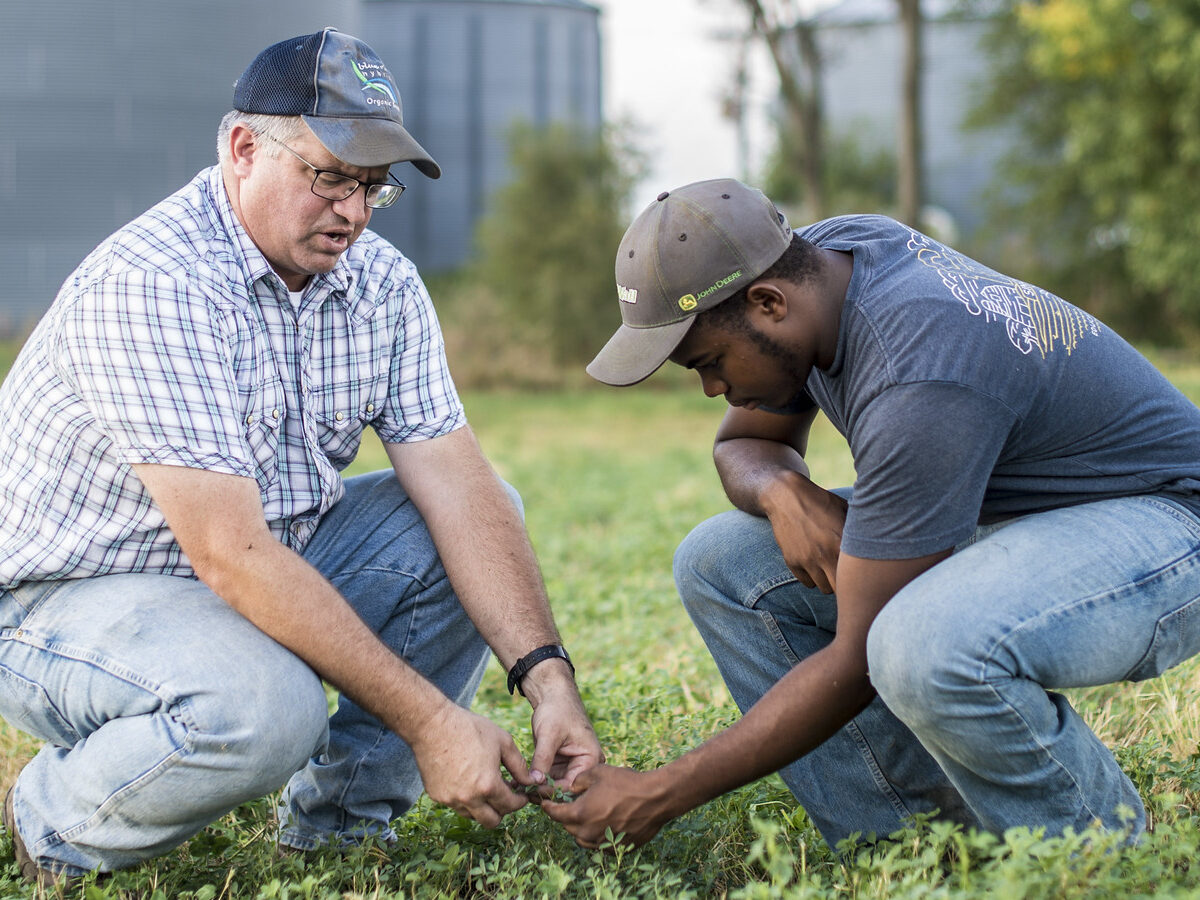OFRF Farmer-Led Trials: Developing a Hardy, Resilient, and Nutritious White Winter Wheat for the Northern Great Plains
Bob Quinn, Quinn Institute

Farm Trial Overview
Growing spring wheat in this region has become increasingly risky for farmers due to climate change challenges that include shorter rainy seasons and earlier than usual summer heat onset. Years ago, Bob felt that growing a hardy and resilient white winter wheat was a good solution, but he found no locally adapted varieties available.
Starting with 100 selections from the USDA small grains collection, Bob identified 15 possible wheat lines that show promise in the field. From the baker and consumer perspectives, Bob hopes to select a nutrient-dense wheat that produces bread loaves that are not as dark as those produced with hard red winter wheat.
Harvest from each line were tested through a bake test for loaf size, texture, taste, and aroma by a bakery partner, Grist Mills, in Missoula, Montana, and compared to a complete baking test by the bread lab at Montana State University. The goal for this year’s farm trial was to select the top 5 or 6 lines to be grown again next year. The final goal of this research project is to produce a free, open mixed population of white winter wheat that can be used by organic farmers in the region that can be used by bakers to produce a highly nutritious tasty bread for their customers.
For full details on the study’s methodology and results, check out the OFRF Farmer Led Trials Blog, or read the final report linked here.
Funding Amount
$1,500
Funding Year
2024Location
Big Sandy, Montana
Collaborators
Josh Poole, Quinn Institute
Organic Farming Research Foundation
Key Findings
- Promising Wheat Lines Identified: Six lines exhibited strong agronomic performance, with Line 19 standing out for its high yield, superior bread quality, and potential nutritional benefits.
- Excellent Baking Potential: Grist Milling and Bakery’s tests revealed that several lines produced high-quality whole grain bread, with ideal texture, aroma, and taste.
- Lodging and Purity Considerations: While most lines performed well, three exhibited significant lodging issues, and a few had purity or kernel color inconsistencies requiring further evaluation.
- Potential Nutritional Advantages: Line 19’s yellowish hue suggests it may offer increased nutritional value, prompting further lab analysis to confirm its nutrient profile.
Based on these results, Quinn plans to advance the top-performing wheat lines into further trials in 2025. Future research will involve expanded baking tests with additional bakeries and continued seed selection, with the goal of releasing a resilient organic wheat variety by 2027.
Region
Northwest
Topic
Plant Breeding, Varieties, and Seeds
Category
Grain and Field Crops
Year Published
2025



